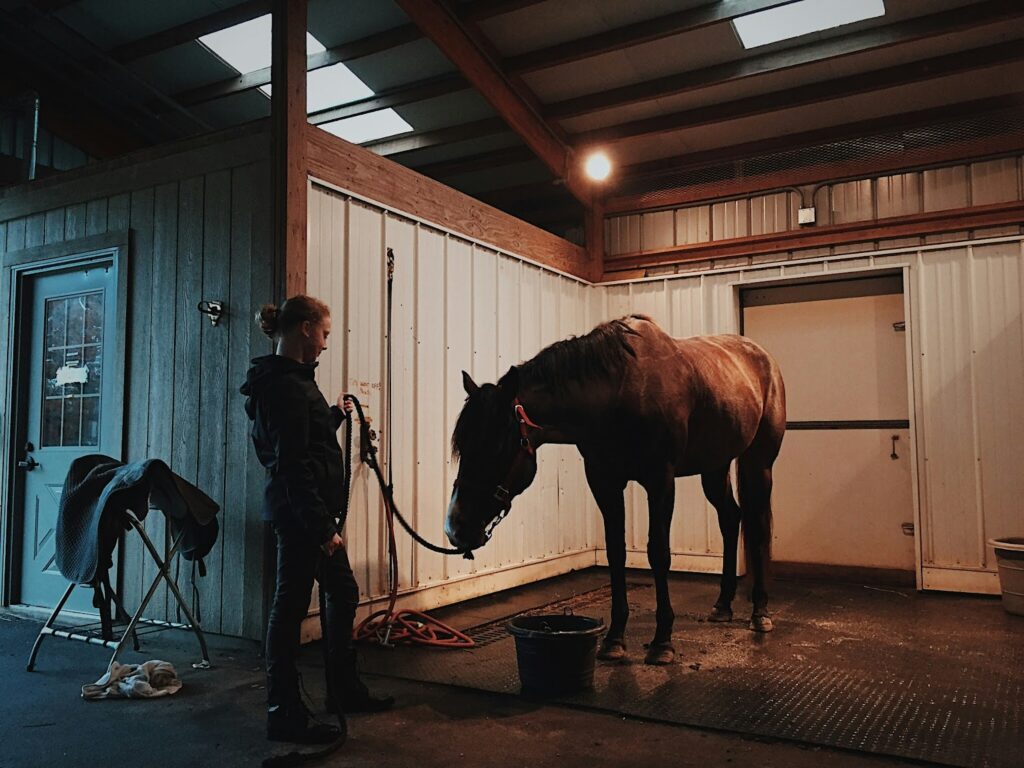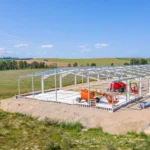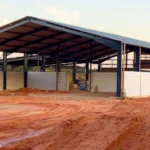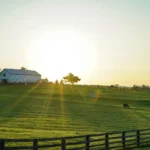Before delving into the specifics, let’s start by discussing what exactly a metal horse barn is. As the name suggests, a metal horse barn is a structure made primarily of metal materials, such as steel or aluminum, designed to house and protect horses. These barns offer a range of benefits over traditional wooden barns, making them a popular choice among horse owners worldwide.
Check out: Pole Barn Vs Metal Building: A Comparative Guide
A metal horse barn is a prefabricated structure that can be customized to meet the unique needs of your horses. It typically consists of a roof, walls, and stalls for housing the horses. These barns are designed to offer ample space and a comfortable environment for horses to live in.
Benefits of Choosing Metal Over Other Materials
When it comes to horse barn construction, metal has several advantages over other materials.
First and foremost, metal horse barns are incredibly durable and resistant to fire, rot, pests, and harsh weather conditions. Unlike wooden barns, metal barns require minimal maintenance, saving you both time and money in the long run. Additionally, metal barns are highly customizable, allowing you to tailor the design to your specific needs and preferences.
They can be easily expanded or modified as your horse herd grows. The lightweight nature of metal materials also means that construction time is significantly reduced compared to traditional barns. This can be especially beneficial if you need a barn erected quickly.
Now, let’s explore some additional benefits of choosing a metal horse barn.
Superior Ventilation
One advantage is the superior ventilation that metal barns provide. Proper airflow is crucial for the health and well-being of horses, as it helps to prevent the buildup of harmful gasses and reduces the risk of respiratory issues.
Metal horse barns are recognized for their durability and strength. They provide unparalleled protection against fire, as steel does not burn but instead melts at temperatures around 2,500 degrees Fahrenheit.
Metal barns can be designed with features such as large windows, vents, and skylights, ensuring that your horses have a constant supply of fresh air.
Resistance to Pests & Energy Efficient
Another advantage of metal horse barns is their resistance to pests. Unlike wooden barns, which can be susceptible to termite infestations and other pest problems, metal barns are not a favorable environment for pests to thrive. This means that you can rest easy knowing that your horses are protected from potential health hazards associated with pests.
Furthermore, metal horse barns are known for their energy efficiency. The metal materials used in their construction have excellent insulation properties, helping to regulate the temperature inside the barn. This means that your horses will be comfortable year-round, regardless of the weather conditions outside.
Additionally, the energy efficiency of metal barns can lead to cost savings on heating and cooling expenses.
Aesthetics and Customization
When it comes to aesthetics, metal horse barns offer a wide range of design options. You can choose from various colors, finishes, and architectural styles to create a barn that complements your property and personal taste. Whether you prefer a traditional or modern look, there is a metal horse barn design to suit your preferences.
Additionally, metal horse barns are a durable, customizable, and efficient choice for housing and protecting your horses. With their superior ventilation, resistance to pests, energy efficiency, and aesthetic options, metal barns provide a comfortable and safe environment for your equine companions.











